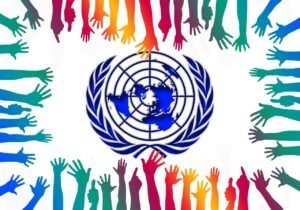The 10 Largest Economies in the World by 2025: Future Insights
The concept of global economies encompasses the interdependent financial systems that govern trade, investment, and economic interaction between nations. Understanding these economies is crucial, as they play a significant role in shaping international relations and influencing global trade dynamics. An economy’s strength is typically assessed through various indicators, with Gross Domestic Product (GDP) being one of the most prominent measures. GDP reflects the total value of goods and services produced in a country, providing a snapshot of its economic health. However, it is not the sole determinant of economic status.
Other crucial factors include population size, which directly affects market potential and labor force. A larger population can lead to increased demand for goods and services, thus contributing to economic growth. Additionally, a nation’s natural resources and technological advancements play pivotal roles in facilitating industrial development. Countries rich in valuable resources like oil, minerals, or fertile land can leverage these assets to enhance their economic standing. Equally, nations that prioritize technology and innovation tend to maintain competitiveness in the global market.
Political stability is another essential component that influences an economy’s performance. Countries with strong, stable governance are often viewed as more attractive locations for investment, as they offer a reliable environment for business operations. Conversely, political turmoil can deter foreign investments, leading to economic stagnation. Therefore, a nation’s political landscape, alongside its economic resources and technological capabilities, firmly contributes to its position in the global economy.
As countries continue to evolve, understanding these dynamics becomes critical for predicting future trends and economic shifts. By analyzing these factors, one can gain insights into the potential trajectories of global economies as we look towards the year 2025 and beyond.
Criteria for Ranking Economies
When analyzing the largest economies in the world, it is crucial to apply a systematic approach to ensure accurate assessments. The primary metric used for this purpose is Gross Domestic Product (GDP), which represents the total monetary value of all goods and services produced in a country within a specified timeframe, typically a year. GDP serves as a cornerstone for understanding the economic capacity of a nation and is commonly viewed in both nominal and purchasing power parity (PPP) terms. While nominal GDP provides a snapshot based on current exchange rates, GDP measured by PPP adjusts for price level differences across countries, offering a more balanced and realistic comparison of economic output.
In addition to GDP, economic growth rates play a significant role in determining the potential trajectory of an economy. Growth rates reflect the percentage increase in GDP over a specific period and provide insights into the overall health of an economy. Economies exhibiting robust growth are generally seen as more dynamic and therefore attract more investment and resources, further propelling their development. This growth is often influenced by factors such as technological advancements, population demographics, and government policies aimed at fostering a conducive economic environment.
Furthermore, consideration must also be given to external trade dynamics, foreign direct investment (FDI), and inflation rates. These factors complement the understanding of economic resilience and sustainability. By evaluating these various metrics, researchers and analysts can ascertain not only the current standing of economies but also their potential for growth and competitiveness in the global marketplace. Therefore, the methodologies employed in ranking economies are multi-faceted, taking into account various elements that contribute to a holistic view of economic performance.
Current Economic Landscape: A Snapshot of 2023
As we assess the global economic environment in 2023, several key players emerge as the dominant forces shaping the international landscape. The global economy is currently valued at approximately $100 trillion, with notable contributions from several nations leading the way in Gross Domestic Product (GDP) output. The leading economy remains the United States, which holds a GDP exceeding $26 trillion. This substantial figure underscores the US’s position as a pivotal actor in global commerce, finance, and innovation.
Following closely is China, with its GDP estimated at nearly $17 trillion. As the second-largest economy, China continues to experience rapid growth, largely driven by its manufacturing sector, technology advancements, and increasing domestic consumption. Other significant economies include Japan and Germany, with GDPs around $4.3 trillion and $4.2 trillion, respectively. Both nations play crucial roles in international trade, contributing to their respective regional stability and economic influence.
India has also risen remarkably in the economic hierarchy, showcasing a GDP of approximately $3.5 trillion as of 2023. Its growth trajectory is primarily propelled by technology, service sectors, and a youthful demographic, indicating that it could potentially challenge established economic powers in the near future. Additionally, the United Kingdom, France, and Brazil maintain their positions within the top ten, with GDPs around $3 trillion, $2.8 trillion, and $2 trillion respectively, highlighting their relevance in the global economic framework.
This snapshot of the current economic landscape effectively illustrates the dynamic nature of global economies as we head towards 2025. With emerging markets gaining traction and traditional powerhouses adapting to new realities, these figures set the groundwork for future projections regarding the largest economies in the coming years.
Predicted Economic Growth Trends Towards 2025
The anticipated economic growth trends from 2023 to 2025 are shaped by a confluence of factors that reflect both challenges and opportunities for economies worldwide. One significant element is the recovery from the COVID-19 pandemic, which has prompted nations to reassess their economic structures and embrace reforms aimed at enhancing resilience. Governments across the globe are implementing stimulus packages and recovery plans to reinvigorate consumer spending and business confidence, which are crucial for driving growth in the coming years.
Additionally, technological advancements play a pivotal role in shaping economic trajectories. The rapid expansion of digital technologies, such as artificial intelligence, machine learning, and automation, is transforming industries, improving efficiencies, and fostering innovation. These technologies are likely to spur economic growth by opening new markets, optimizing supply chains, and altering the nature of work. Countries that effectively leverage these technological trends stand to gain significantly in terms of productivity and competitive advantage.
Globalization also remains a central theme influencing economic growth. As barriers to trade continue to diminish, economies are becoming more interconnected, allowing for the exchange of goods, services, and ideas. This interconnectedness is expected to foster economic integration, with emerging markets gaining access to broader markets and more diverse investment opportunities. However, this trend is also accompanied by challenges such as supply chain vulnerabilities and geopolitical tensions, which could pose risks to stability and growth.
Furthermore, evolving consumer behaviors, particularly in the wake of the pandemic, highlight a shift towards sustainability and digital engagement. Consumers are increasingly prioritizing ethical consumption and innovation in their purchasing decisions. This shift is likely to drive companies to adapt their strategies, influencing economic growth as sectors adapt to meet changing demands. Therefore, the trajectories of the largest economies by 2025 will be profoundly influenced by these dynamic and interconnected trends.
The Top 10 Economies Projected for 2025
As we look ahead to the year 2025, a comprehensive analysis of the world’s largest economies reveals fascinating insights into their projected standing, governing industries, and anticipated growth trajectories. The following are the top 10 economies that are expected to dominate the global landscape by 2025:
1. United States – With a projected GDP surpassing $26 trillion, the United States remains the world’s largest economy. Key sectors such as technology, finance, and healthcare contribute significantly to its robust economy. Ongoing advancements in artificial intelligence and renewable energy also promise to bolster future growth.
2. China – China is projected to maintain its rapid economic ascent, aiming for a GDP close to $19 trillion by 2025. Its manufacturing prowess, coupled with a growing technology sector, including e-commerce and fintech, supports this trend. Urbanization and an expanding middle class further fuel economic expansion.
3. India – India is expected to emerge as the third-largest economy with a projected GDP of around $5 trillion. The country’s young workforce, combined with sectors such as information technology, pharmaceuticals, and agriculture, are vital drivers of this growth. Government initiatives promoting digitalization play a pivotal role as well.
4. Japan – Japan’s economy is anticipated to reach $4.5 trillion. Although it faces challenges such as an aging population, advancements in robotics and automation within traditional manufacturing will help sustain its economic resilience.
5. Germany – Projected to have a GDP of $4.2 trillion, Germany remains Europe’s largest economy. Its engineering, automotive, and export-oriented industries enhance its global competitiveness, supported by strong trade relationships.
6. United Kingdom – With expectations of a GDP nearing $3 trillion, the UK’s financial services sector, along with creative industries and technology, position it as a leading global economy despite uncertainties arising from Brexit.
7. France – France is projected to reach a GDP of approximately $3 trillion, benefiting from diverse industries including aerospace, automotive, and luxury goods. Government policies aimed at fostering innovation are expected to boost growth.
8. Brazil – Brazil is anticipated to solidify its status as the largest economy in Latin America, projecting a GDP of around $2 trillion by 2025. Its agricultural exports, natural resources, and a growing tech startup scene are key contributors.
9. Italy – Italy’s economy is expected to expand, reaching $2 trillion. The charm of its tourism industry, along with manufacturing and a focus on luxury goods, strengthens its economic framework.
10. Canada – Lastly, Canada is projected to hold a GDP around $2 trillion, supported by its rich natural resources, technological innovation, and a solid banking sector.
These forecasts indicate a dynamic shift in the global economic hierarchy, influenced by factors such as technological innovation and demographic trends. The socio-economic landscapes of these nations will continue to evolve as they position themselves to thrive in a competitive environment.
Emerging Economies: The New Contenders
As we look ahead to 2025, several emerging economies are poised to step into the limelight, showcasing remarkable growth potential that may alter the global economic landscape. Countries such as India, Brazil, and Vietnam are at the forefront of this evolution, with various factors contributing to their expected advancements. These nations are not only expanding their industrial capacities but are also improving their infrastructure, trade policies, and human capital, making them key players in the international market.
India, for instance, is anticipated to emerge as one of the largest economies by 2025, driven by a young workforce and increasing urbanization. The nation’s focus on technology, manufacturing, and digital finance is stimulating growth across sectors. Government initiatives like “Make in India” are further encouraging foreign investments, which bolster domestic production, enhancing India’s competitiveness on the global stage.
Similarly, Brazil, with its rich natural resources and vibrant agricultural sector, is expected to solidify its position among the leading economies. The country’s economic policies are gradually shifting towards sustainability, aiming to attract new investments in renewable energy and technology. This strategic pivot is key to diversifying Brazil’s economy and reducing its dependence on commodity exports.
Vietnam, on the other hand, has quickly become a manufacturing hub, often dubbed the “next China.” The nation benefits from its strategic location in Asia and has positioned itself as an attractive destination for businesses looking to relocate their manufacturing bases. The government’s efforts to enhance business conditions and reduce bureaucratic hurdles have resulted in increased foreign direct investment, which fuels the economy and creates jobs.
These emerging economies signify a shift in global dynamics, illustrating the potential for growth and innovation outside of traditional economic powerhouses. The rise of these contenders demonstrates the complex interplay of local policies, global trends, and the relentless pursuit of economic expansion, ultimately shaping the future of the global economy.
Challenges Facing Major Economies by 2025
As we look towards 2025, the world’s largest economies are projected to encounter a myriad of challenges that could significantly impact their growth and stability. One of the foremost concerns is political instability, which can arise from numerous factors including internal conflicts, governance issues, and shifts in political power. Countries experiencing political unrest may struggle to maintain investor confidence, leading to volatile markets and uncertain economic conditions.
Another critical area of concern is trade disputes. As globalization has encouraged interconnected economies, the imposition of tariffs and trade barriers can inhibit economic growth. Heightened tensions between major trade partners, particularly among nations such as the United States, China, and the European Union, may lead to a retrenchment in trade, negatively affecting exports and imports. This environment can stifle innovation and create ripple effects across global supply chains, undermining overall economic performance.
Environmental concerns are also becoming increasingly pressing for large economies. The impacts of climate change, resource scarcity, and environmental degradation pose significant risks. Major economies are under growing pressure to implement sustainable practices and reduce carbon footprints. Failure to address these environmental challenges may result in lost productivity, increased costs associated with climate adaptation, and social unrest linked to resource shortages.
Moreover, technological disruptions can create both opportunities and challenges. Rapid advancements in automation, artificial intelligence, and digitalization present a dual-edge sword; while they can enhance productivity and create new markets, they can also lead to job displacement and exacerbate income inequality. Countries will need to strategize on workforce reskilling and education to mitigate these adverse effects.
In conclusion, the journey towards achieving stable and sustainable growth by 2025 will be riddled with multifaceted challenges that demand strategic foresight and resilience from the world’s largest economies.
The Impact of Globalization and Technology on Future Economies
Globalization and technological advances are playing a significant role in reshaping national economies, impacting various sectors and creating new paradigms for economic growth. As nations become more interconnected, the importance of a global economy becomes increasingly evident, pushing countries to adapt to changing dynamics. The emergence of digital currencies is one such transformational trend; these currencies are not only facilitating cross-border transactions but are also influencing monetary policies and stability across nations. Cryptocurrencies, in particular, are gaining traction and may fundamentally alter how economies operate by allowing decentralized transactions devoid of traditional banking interruptions.
Additionally, e-commerce stands as a key driver of economic activity, fostering trade growth and enhancing consumer access to goods and services. The proliferation of online marketplaces and digital payment systems enables consumers to purchase from international vendors, expanding business opportunities and profit margins. Countries that embrace this shift are likely to experience substantial economic growth as domestic firms can compete on a global scale. Furthermore, e-commerce empowers small and medium-sized enterprises (SMEs) to enter the global market without incurring hefty infrastructure costs.
Moreover, automation and technological innovation are redefining the labor market and productivity metrics. As companies adopt smart technologies, including artificial intelligence and robotics, they can streamline operations, reduce costs, and enhance output, fueling economic expansion. However, this transition presents challenges, such as workforce displacement and the need for re-skilling employees. Therefore, nations must prioritize educational strategies to ensure that workforces are equipped to navigate this evolving landscape.
Ultimately, the interplay between globalization and technology is crucial for future economic success. Nations that proactively harness these forces will be better positioned to thrive in the intricate tapestry of the global economy.
Preparing for the Future of Global Economies
As we contemplate the future of global economies projected for 2025, it becomes evident that keeping abreast of economic trends is crucial for various stakeholders, including businesses, investors, and policymakers. The anticipated shifts in economic power will not only reshape market dynamics but will also determine the strategic directions these entities must navigate. Understanding the emerging economic landscape enables stakeholders to make informed decisions that align with future opportunities and challenges.
The projected growth of economies such as India and Brazil highlights the importance of recognizing rising markets that can drive global growth. Additionally, established economies must adapt to maintain competitiveness; this may involve fostering innovative industries, enhancing workforce skills, and embracing sustainable practices. As these economic transformations unfold, the ability to anticipate changes and react adaptively will become indispensable.
For businesses, being aware of the largest economies in the world by 2025 can inform strategic planning. Companies can focus on market expansion in regions showing robust growth potential or invest in sectors poised for success. Similarly, investors can adjust their portfolios to include assets that align with economic shifts, safeguarding their investments against potential downturns in traditional markets.
Moreover, policymakers should consider these insights when formulating economic policies, ensuring that they promote resilience and adaptability in their economies. By fostering an environment conducive to growth and innovation, governments can help prepare their nations for the upcoming world economy.
In conclusion, recognizing the ongoing developments among the largest economies in the world will empower individuals and organizations alike to strategically position themselves for the future. Staying informed and responsive to these economic trends will be essential in navigating the complexities of the global marketplace effectively.




